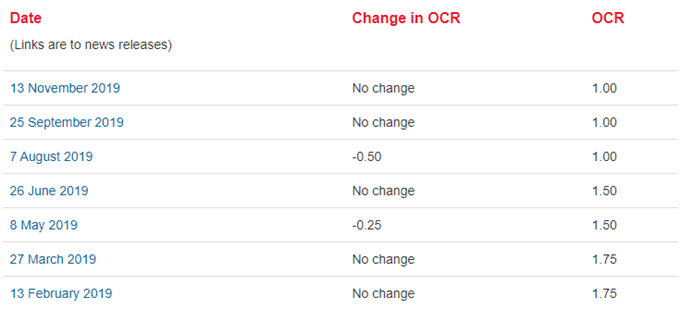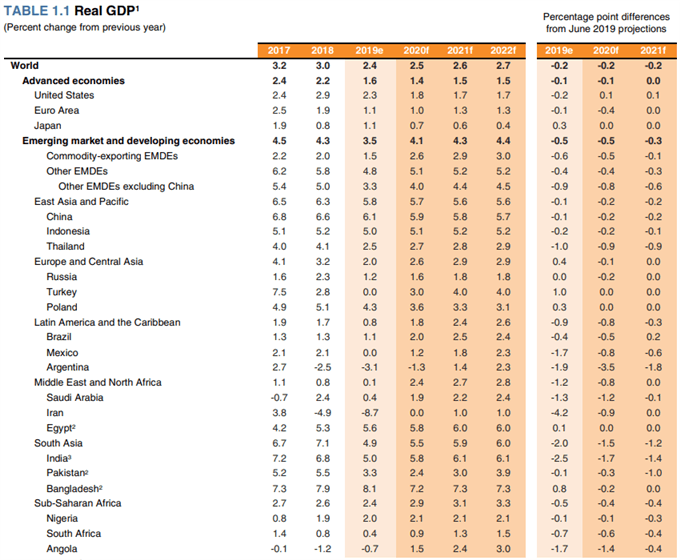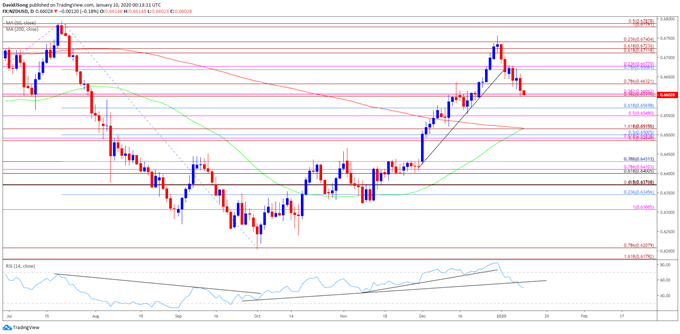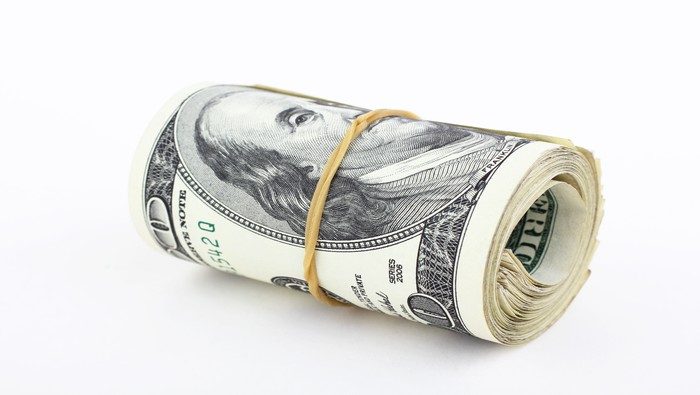New Zealand Dollar Talking Points
NZD/USD trades near the weekly low (0.6600) even though the US and China appear to be on track to sign the Phase One trade deal, and exchange rate may exhibit a more bearish behavior over the coming days as the Relative Strength Index (RSI) falls back from overbought territory.
NZD/USD Trades Near Weekly Low Despite Looming US-China Trade Deal
The NZD/USD correction from the 2019 low (0.6204) unravels following the failed attempt to test the July high (0.6791), and the yearly opening range foreshadows a further decline in the exchange rate as it extends the series of lower highs and lows from the start of the month.



It remains to be seen if the signing of the Phase One trade deal will impact the near-term outlook for NZD/USD as President Donald Trump pledges to visit Beijing at a later date “where talks will begin on Phase Two,” and the narrowing threat of a trade war may encourage the Reserve Bank of New Zealand (RBNZ) to keep the official cash rate (OCR) on hold at the next meeting on February 12 especially as the government plans to boost infrastructure spending by an additional NZ $12B.

The expansion in public expenditure may keep the RBNZ on the sidelines throughout the first half of 2020 as “members noted that fiscal stimulus could be greater than assumed,” and Governor Adrian Orr and Co. may adopt a less dovish tone over the coming months as “the Committee agreed that the reduction in the OCR over the past year was transmitting through the economy and that it would take time to have its full effect.”
However, the RBNZ may keep the door open to implement lower interest rates as “the risks to the economy in the near term were tilted to the downside,” and the central bank may reiterate its pledge to “add further monetary stimulus if needed” as the World Bank cuts its global growth forecast, with the world economy now projected to expand “2.5 percent in 2020, 0.2 percentage point below previous forecasts.”

The World Bank warns that “growth in the East Asia and Pacific (EAP) region is projected to slow from an estimated 5.8 percent in 2019 to 5.7 percent in 2020 and moderate further to 5.6 percent in 2021-22,” with the group going onto say that “heightened uncertainty surrounding the external environment is likely to persist, amid a fragile global outlook.”
In response, the RBNZ may continue to prepare a contingency plan “for an unlikely scenario where additional monetary instruments are required,” and the central bank may continue to insulate the New Zealand economy in 2020 as “growth in global trade and manufacturing is weak and uncertainty remains high.”
As a result, the New Zealand Dollar may face additional headwinds in 2020, with NZD/USD at risk of exhibiting a more bearish behavior as the Federal Reserve sees US interest rates on hold over the next 12 months.
Sign up and join DailyFX Currency Strategist David Song LIVE for an opportunity to discuss potential trade setups.
NZD/USD Rate Daily Chart

Source: Trading View
- The NZD/USD correction from the 2019 low (0.6204) appears to have run its course amid the failed attempt to test the July high (0.6791), with the exchange rate failing to retain the upward trend from December.
- The Relative Strength Index (RSI) highlights a similar dynamic as the oscillator falls back from overbought territory and snaps the bullish formations carried over from the previous year.
- The opening range for 2020 foreshadows a further decline in NZD/USD as the exchange rate extends the series of lower highs and lows from the start of the month.
- In turn, a break/close below the Fibonacci overlap around 0.6600 (38.2% expansion) to 0.6610 (38.2% expansion) may spur a move towards the 0.6550 (50% expansion) to 0.6570 (61.8% retracement) region, with the next area of interest coming in around 0.6490 (50% expansion) to 0.6520 (100% expansion).



--- Written by David Song, Currency Strategist
Follow me on Twitter at @DavidJSong.




